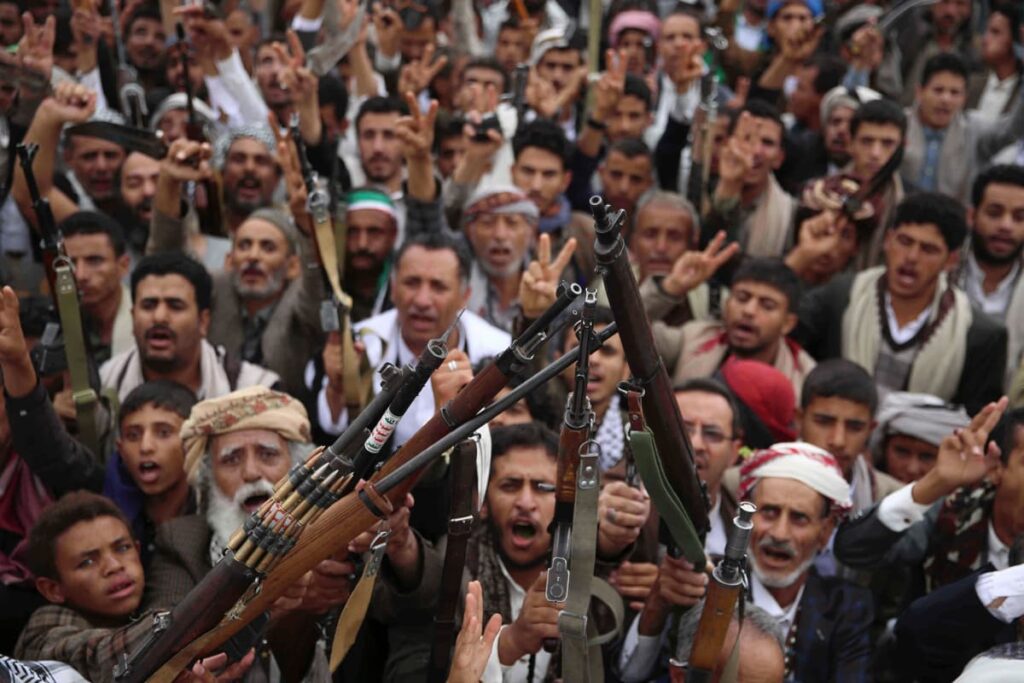
The Red Sea has transformed into a critical battleground as the Iranian-backed Houthi rebels intensify their maritime operations, significantly affecting global shipping. Their recent actions, including sinking two commercial vessels within days, have raised alarm among international shipping sectors and governments. The attacks, which have resulted in the deaths of at least four sailors, are perceived as a strategic evolution in the Houthis’ capabilities and intentions, prompting a sharp increase in insurance premiums and freight costs.
The first incident involved the sinking of the MV Tutor on July 12, 2023, which led to the death of one crew member. Just days later, the MV Verbena was struck by a missile, resulting in three additional fatalities. These incidents have shocked the global shipping industry and have severely compromised the efforts led by the United States and the United Kingdom to secure the vital Bab el-Mandeb Strait, a key chokepoint for international trade.
Behnam Ben Taleblu, Senior Director of the Foundation for Defense of Democracies Iran Program, stated, “The Houthis have clearly proven to a whole host of adversaries that they are not spooked by traditional deterrence measures.” The ongoing maritime offensive is causing shippers to hesitate, shifting costs onto consumers and effectively allowing the Houthi strategy to succeed.
The United States has responded vigorously since the onset of violence on October 7, 2023, when Hamas attacked Israel, resulting in the deaths of 1,200 people and taking over 200 hostages. In this context, the U.S. has conducted over 1,000 air and naval strikes on Houthi targets in Yemen as part of Operation Rough Rider. While these efforts have inflicted heavy losses on the Houthis, they have also drawn criticism for resulting in civilian casualties.
A ceasefire, brokered in May 2025, temporarily halted attacks on American vessels. However, this truce quickly collapsed, prompting the Houthis to resume hostilities. Despite U.S. military efforts, the group appears undeterred, leveraging their maritime campaign as a tool for asymmetric warfare and political leverage.
Edmund Fitton-Brown, a former United Kingdom Ambassador to Yemen, commented, “Shipping and insurance companies are risk-averse, so it doesn’t take much to dissuade them from using the Suez Canal, Red Sea, and Strait of Mandab.” The Houthis’ growing sophistication in attacks is concerning intelligence and naval officials.
Notably, the Houthis have expanded their targets to include vessels with no ties to the West, raising the stakes for international shipping. Some ship captains are now marking their vessels with messages like “ALL MUSLIM CREW” to signal their neutrality. This indiscriminate targeting marks a significant shift in their operations, with attacks increasingly directed at any vessel passing through the region.
Moreover, the Houthis have developed advanced capabilities, utilizing drones that can be produced at minimal costs, allowing for rapid replenishment and increased operational effectiveness. According to Rose Kelanic, Director of the Middle East Program at Defense Priorities, the U.S. strikes have not diminished Houthi resolve. Instead, their standing appears strengthened due to the perception of U.S. airstrikes as a validation of their resistance efforts.
As Iran’s influence over various militias fluctuates, its support for the Houthis has intensified. The Houthis now benefit from advanced weaponry and tactics, including the use of maritime “ghost fleets” that evade detection by manipulating GPS signals. Taleblu notes, “The Houthis could be considered the most important proxy in Iran’s constellation of terror groups.”
The implications of the Houthi attacks extend beyond immediate regional threats. If unchecked, this crisis could demonstrate the effectiveness of Iran’s proxy strategy, where minimal risk translates into significant global disruption. Fitton-Brown emphasized the complexity of deterring the Houthis, stating, “They are resilient and will stop and start hostilities largely undeterred by air strikes.”
Looking ahead, the Houthis appear committed to their long-term strategy, bolstered by Iranian support and the ongoing situation in Gaza. Analysts suggest that the group is not only seeking leverage but also legitimacy through their maritime operations. Each day without decisive action reinforces the reality that the Houthis have established themselves as architects of a modern maritime insurgency.
Taleblu highlighted, “There is no doubt that the Houthis have grafted onto the Palestinian cause as one of their own.” He urged that this should not deter Western nations from countering the Houthi threats.
Fitton-Brown outlined two primary avenues for deterring the Houthis: holding Iran accountable for Houthi actions and possibly tipping the scales of the civil war against them through military collaboration with regional partners. However, other experts, including Kelanic, argue that addressing the root causes of the conflict, particularly the situation in Gaza, might be essential for resolving the Houthi threat in the Red Sea.
As the situation evolves, the global community remains watchful, aware that the Houthis have positioned themselves as a formidable challenge with no clear resolution in sight.







